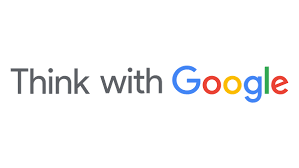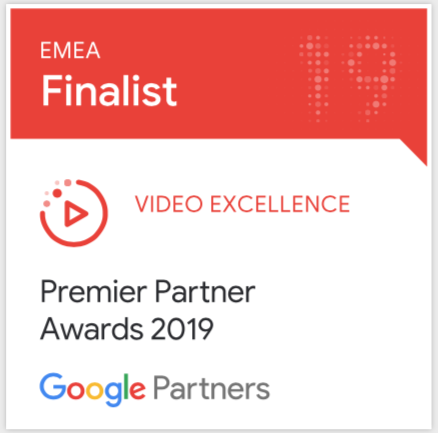This report highlights some of the biggest search trends impacting the industry in 2017. The trends revealed deliver influential insights for advertisers to respond and adapt their strategies accordingly. In a nutshell, smartphone usage is still transforming our world. Technology is growing at an exceptionally quick rate changing the customer experience continuously.
Search Engine Advertising
Shopping ads 2.0 a welcome shift for advertisers
Within the retail industry, shopping advertisement is one of the key areas where mobile has had a significant impact. Shopping ads were already extremely hot for retailers in 2016, but it skyrocketed in 2017. Among the findings in Merkle's Digital Marketing Report, shopping ads accounted 52% of retail search ad clicks. Actually, the ad format has been around for a while. Google rolled it out to all US advertisers in 2011, three years later the feature became available in Belgium. The spending on Shopping rose by 23% year on year in Q1 2017, compared to 12% for text ads. Two main drivers are accountable for this meteoric rise. First and non-surprisingly, the growing impression volume on mobile. Secondly and more particularly, the growth was largely driven by non-brand queries.
Google upped the shopping game in July of 2017 when revealing the brand-new ad format: Showcase Shopping ads. These ads offer a more immersive ad experience. A click on the ad does not send searchers to a landing page but instead expands to show off a catalog of relevant products. This enriches both the search engine results page and gives retailers more options when it comes down to creative messaging. The objective of this format is to answer broad category queries with showcase cards, which PLA could not. With showcase ads each slot highlights a different retailer, allowing advertisers to communicate on other differentiators than price to seal the deal. Important note is that the large card format has an impact on the visibility of others, as fewer ads are shown. It is thus expected that the fight for the limited number of visible placements will be harder in the months to come.
More accurately link the online & offline worlds
Jorg Snoeck estimated that from all 80.000 shops in Belgium only 50.000 will remain. With 30.000 stores shutting down on the mid-long term, shopping appears to have moved from traditional brick-and-mortar retail to e-commerce. Notwithstanding, digital-first brands are starting to open up their physical stores. So, perhaps things aren’t changing as drastically? It becomes obvious that both channels, brick-and-mortar and e-commerce, should come together to create a seamless omnichannel experience. To understand the journey from online to offline, it has been historically difficult to measure the impact of digital media on local spending. Many companies have been working on the problem, including Google, who introduced store visits tracking two years ago. AdWords teamed up with Google Maps to estimate store visit conversion by looking at phone location. Simply being near a store doesn’t automatically count as a visit, there are additional considerations like time to filter out fast passants and people who work there for example. The challenges this measurement system encounters are predominantly scale and location precision. Therefore Google has started experimenting with beacons to augment store visit accuracy and improve its algorithm.
Google maps part of the ad inventory unlocking next level of local advertising
The fact that Google is investing to improve the technology behind the algorithm is not coming by surprise. In the “mobile first” era, consumers conducting searches with hyperlocal intent is growing 50% faster than mobile searches overall. To stay on top, advertisers’ hyperlocal marketing efforts will soar in 2018. As such, it is getting much more serious about ads on Maps. Adapting to this trend, Google is bringing what it calls more “branded and customized experiences” for marketers to Google Maps. Advertisers will be able to position branded pins along their target audiences routes. We are likely to see an evolution in terms of ad formats for marketers to include promotions and discounts to encourage store visits over time.
Search Engine Optimization
As little clicks as possible with featured snippets
When going back to the basics, Google’s number-one mission is to answer users’ queries in as little clicks as possible. As such, it is a common-sense assumption that SERP features significantly reduce the overall number of clicks for organic search results. A study conducted by onthemaps.com uncovered some interesting insights worth sharing. When which SERP feature appears is linked to the intent the search query implies. The intent was categorized into three types:
- Informational: find specific information
- Navigational: show intent to navigate a specific site
- Transactional: queries that imply a transaction
Featured snippets and Related Questions appear the most for informational search queries. The search results for navigational queries on the other hand are dominated by Site Links and Knowledge Panels. Thirdly transactional queries are mostly answered by Site Links and Ads. As hypothesized, organic clicks drop by 19% when there featured snippets pop-up and by 11% when related questions are shown. Sitelinks on the other hand do not steal away traffic form the organic results. This is expected since their purpose is not to answer a question but to take users to another page. Overall the SERP features appearing for top-of-funnel queries can significantly cut into your site traffic if you are not featured in one. As such advertisers should aim at appearing in highly coveted features as they can result in a welcome boost.
The end of words: Emoji taking over
Have you ever tried to type the “Statue of Liberty” emoji into your Google search bar? Yes, simply inserting an emoji allows you to find what you are looking for and be redirected to a brand’s website. Emoji search is the next generation of hashtags and it is becoming more popular. Smileys and ideograms are ingrained in our communication. But are they here to stay and should brands invest in them? A MojiLaLa study examined the adoption rate of emoji usage among smartphone users in the U.S. The outcome? 86% of smartphone owners use emojis regularly, that number jumps to 96% among those 18 to 34 years old. No signs are seen that this would slow down. In the past several travel websites, Twitter, Instagram, Google, YouTube, WhatsApp have added the capability to search using emojis to their platform. However, search engines are still in a deep learning pathway to interpret a single emoji. Context matters to deliver relevant results consistently. Still, the technology is evolving rapidly, and search results from emoji will soon become more refined. In the meantime several advertisers have started setting up experiments with emoji search.
The end of words: Voice taking over
In 2016, 20% of all mobile searches on Google were done by speaking. According to ComScore’s predictions, this rate will jump to 50% by 2020. Knowing that 60% of all searches are conducted on a mobile device, voice search is no longer distant future. There are characteristic differences between text search and voice search. First off all voice searches are predominantly mobile, longer, contain more words and are rather sentences whereas text search are mostly just several keywords. In addition voice search queries are in particular questions (Who?, What?, How?). Following the trend that mobile and local are strongly interlinked, voices searches are mainly locally oriented.
Does the arrival of voice search mean the end of typing? No, to a great extend voices searches are added on top of all the rest. Just like emoji search, the accuracy of the voice platforms is evolving fast. Google for example has read more than 3.000 books to train itself in understanding conversations.
This report highlights some of the biggest search trends impacting the industry today. The trends revealed deliver influential insights for advertisers to respond and adapt their strategies accordingly. In a nutshell, smartphone usage is still transforming our world. Technology is growing at an exceptionally quick rate changing the customer experience continuously.
One thing we noticed in putting this list together is that mobile and offline integration kept popping up, repeatedly. However, these trends are not only about technology, it’s about bringing together the power of technology with a strategy that embraces the change. As we round the bend to 2018, we get a sense of what’s ahead.
{snippet dhanclaes-en}


